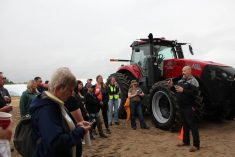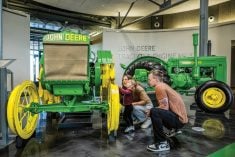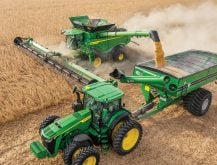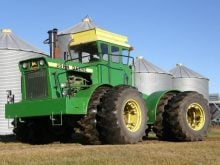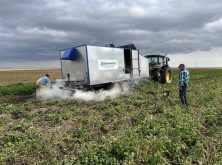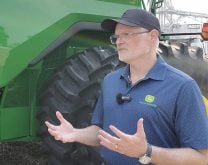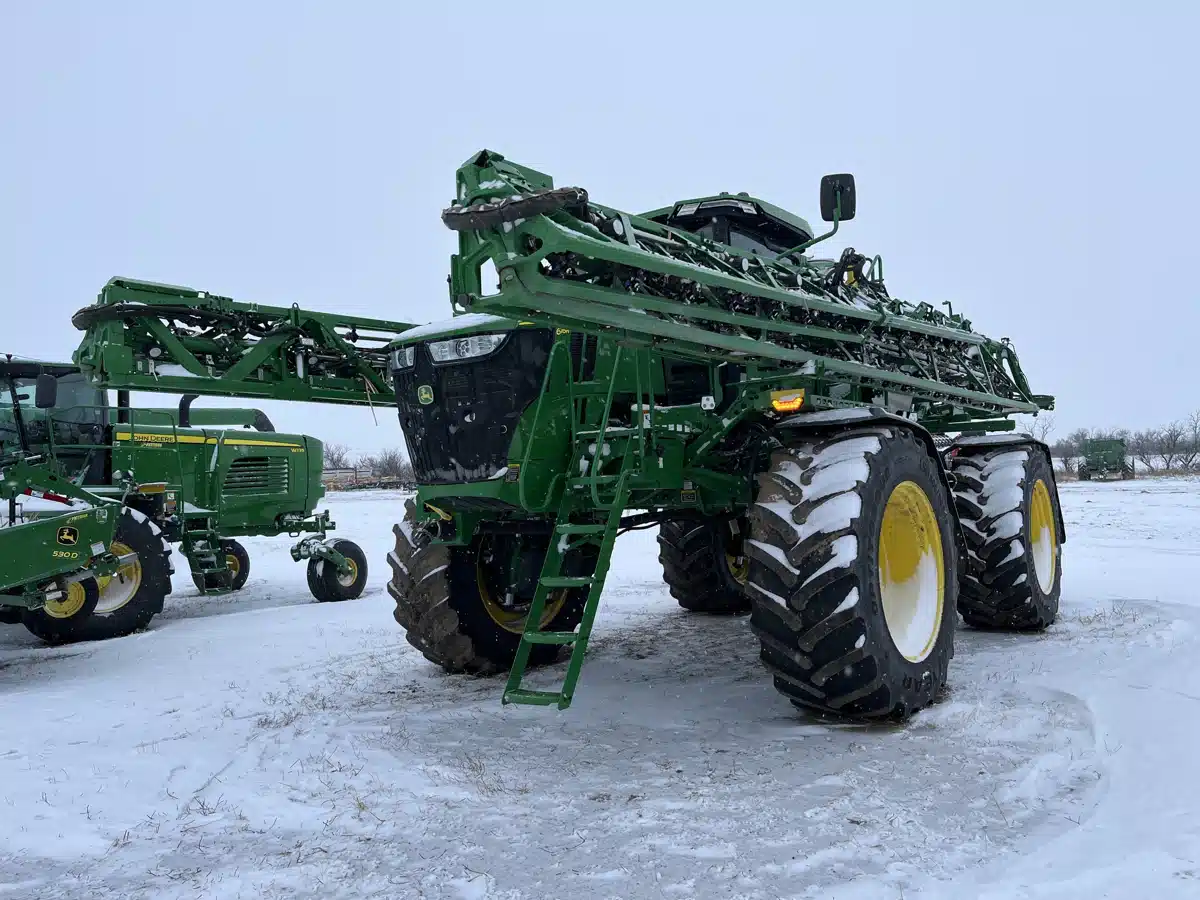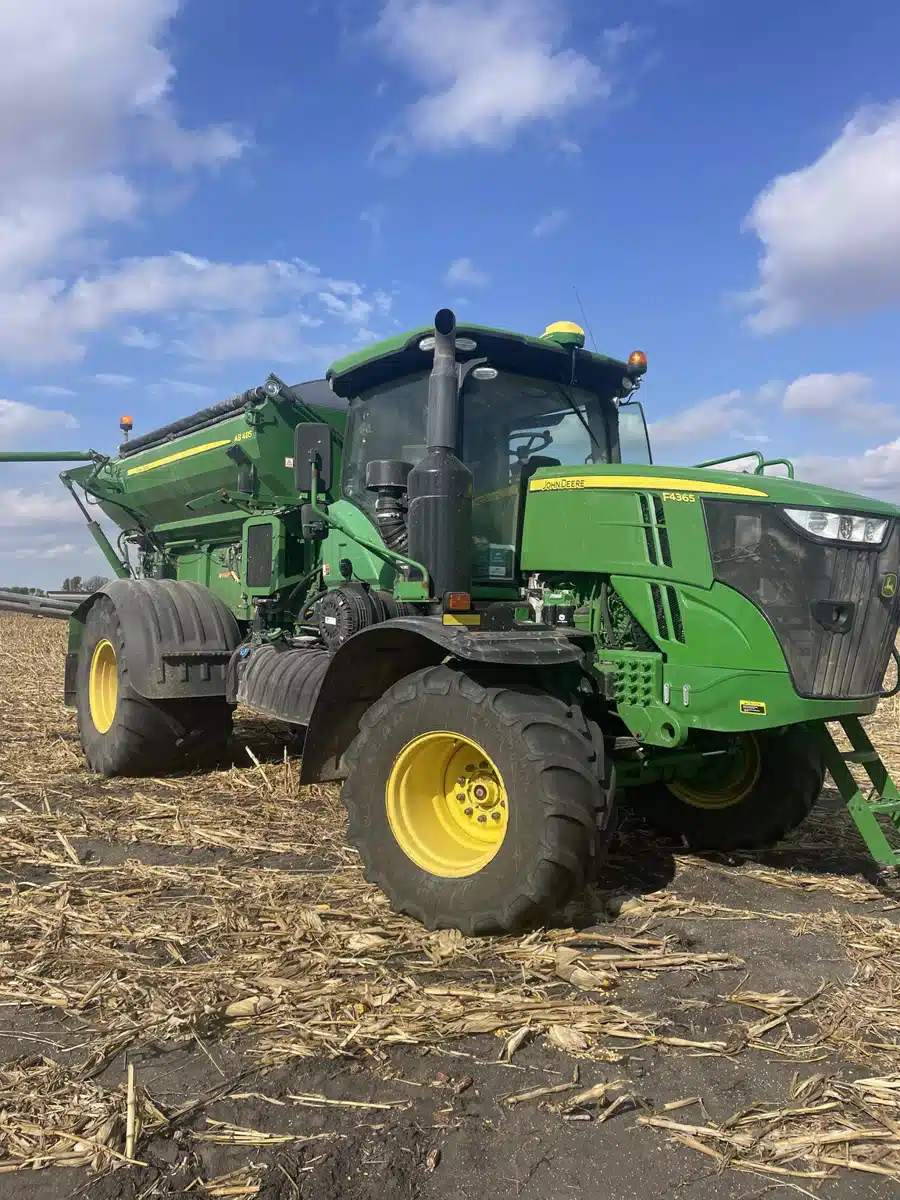Having walked the aisles of the world’s largest ag machinery show, Agritechnica, in Hanover, Germany, one of the things that struck me was the sheer number of different sprayers, many from a host of brands unfamiliar to us here in North America. European farmers have an enormous choice of machines compared with what we’ve been used to on this continent.
But that is gradually changing. Over the last decade, we’ve seen some new faces appear in the sprayer market, as some brands have made the jump across the Atlantic from Europe. They remain minor players in the market here, however. But they have brought some new features with them. And, of course, the level of technology is growing quickly on the more familiar brands, too.
In this on-going series of articles, we’ll talk to the product reps from many of the sprayer brands currently on the market in Canada to give you a sense of what technology is available, and who is offering it.
Read Also

Claas brings 1000 Series SP forage harvesters to Canada
In mid-August, Claas unveiled its new line of Jaguar forage harvesters at an event in Visalia, California, deep in the heart of that state’s dairy region.
In this first instalment, we spoke to Tim Deinert, go-to-market manager for sprayers at John Deere. For a few years now, the John Deere Operations Center has facilitated advancements in data collection, transfer and storage, which has enhanced the amount of data available to Deere equipment owners.
However, maybe the most significant step for the green brand — when it comes to sprayers — has been the introduction of its See and Spray system, essentially a spot-spray system based on AI that identifies and sprays only individual weeds.

See and Spray Ultimate and Premium
The initial version, See and Spray Select, allowed for identifying weeds in a fallow field, or green-on-brown technology as it has come to be referred to in the industry. But in 2022, Deere expanded that capability with the See and Spray Ultimate. And the system can now differentiate between weeds, corn, soybean and cotton plants, allowing it to spot spray in those growing crops.
Aside from being able to order a sprayer right from the factory with that system, a version of it, See and Spray Premium, can also be retrofitted onto 2018 model year and newer Deere sprayers.
“We launched See and Spray Ultimate a year ago,” says Deinert. “We have See and Spray Premium, which we just launched this March. It’s a precision upgrade for an existing sprayer but using that See and Spray technology of identifying weed versus crop. And then it can do any green on brown, which is a fallow situation, as well.”
Although corn and soybeans are far from the dominant crops across the Prairies and cotton crops are non-existent here, Deere expects to eventually give the See and Spray system the ability to function in small grains as well.
“We’re definitely working on additional crops,” says Deinert. “We’ll move into other crops in the future as well.”

The retrofit See and Spray Premium gives an existing machine the spot-spray technology, but it doesn’t go as far as the Ultimate version does. It can only operate on a one-tank system. The Ultimate can handle a dual-spray operation.
“If you have See and Spray Ultimate,” explains Deinert, “that has dual-tank capability, where you can do broadcast with one set of nozzles and tank and target spray with the other set of nozzles. Then See and Spray Premium, which was just launched this spring, that is for single-tank sprayers, taking the sprayer that a farmer or ag service provider has today, adding that technology on and turning it into a targeted sprayer.”
Both Ultimate and Premium are designed to work on a 120-foot-width boom.
While Deere is moving to offer advanced technology features on some of its other machines on a subscription basis, that won’t be the case with the See and Spray system, says Deinert. That’s partly because it relies on additional equipment, cameras, processors, etc., to function. And the technology that forms the base of it, ExactApply, is already part of the base sprayer package.
“So ExactApply is a technology we’ve had out for a while,” he says. “It’s the basis of See and Spray because each nozzle can be controlled with ExactApply, and then BoomTrac technology for controlling boom stability to make sure you have optimum height for See and Spray, and a few other technology components.
“When you add See and Spray, it’s a lot of wiring harnesses, brackets and the cameras themselves.”
For those looking to add the Premium system to a late-model sprayer they already own, it can be done on the farm, but it might be a job best left to a service tech to perform.

“It’s not so much taking the machine apart, it’s adding on the technology,” Deinert continues. “If it’s a fully loaded sprayer of today, you’d just add on the harness, the brackets, cameras and some other vision processing units to make this happen.
“A customer could do it, but most people would probably opt for their dealer to do it, because they’re all trained up on this technology.”
List price for the retrofit See and Spray Premium kit is around US$80,000.
What is the value?
So, is the additional investment worth it? Has John Deere been convincing potential customers and those who’ve demoed the system to see the value it provides?
“It’s one of those things that they have to see to believe it,” Deinert says. “A lot of it is getting in front of farmers to see the technology work. When they do see it the gears in their heads start to turn and they think, ‘how does this fit into my operation?’”
And aside from the reduction in the overall amount of chemical used, Deinert says it provides owners with additional choices for the same or less cost.
“If you’re growing corn in Ontario versus Nebraska,” he says, “the timing and the chemical you put on are completely different. So, the savings can look different. And how you approach the application season can look different.
“We talk about the savings. That’s a no-brainer, because instead of spraying the whole field, you’re targeting just the weeds. But there might be other things you could look at like, ‘I might be using less chemical but maybe I use different types of chemical based on my savings and have cleaner fields.’ It saves money. It’s better for the land. It’s a win-win for everybody.”

Coverage
However, is the technology capable of adequately covering a field and not leaving some plants inadequately covered, which could promote weed resistance?
“That’s a valid question,” Deinert acknowledges. “With See and Spray, we target it to have as good or better efficacy than broadcast. Our expectation is See and Spray is working as well or better than a traditional broadcast sprayer. You can have the savings of up to two-thirds and still have as good a kill and fields as clean, if not cleaner, than you have with a traditional broadcast sprayer.”
According to Deere’s spec sheet, See and Spray Ultimate can identify weeds as small as one-quarter inch in diameter and one-quarter-inch tall in crops, as long as they’re not hidden by other plants.
The system also creates a detailed application map that producers can use to evaluate weed populations in a field. And when combined with yield maps and other coverage maps, it can help them identify what field tasks provided a net gain and which ones didn’t.
“A big no-brainer that people love is the fact you could have a weed pressure map,” Deinert says. “As you’re going across the field, the sprayer will map where it turned on the nozzles and where the nozzles were off. You could visualize if you had, say, savings of 60 per cent. You could see that on the map itself.
“You could start to overlay those maps with, maybe, yield maps in the fall from your combine, or maybe a tillage map if you have TrueSet and you’re varying your tillage depth. You could see the effect of weed control throughout the year based on tillage or no till. We just start adding layers where you start to dissect your field even more. And you start to understand the effects of each step in the production process now that we’re getting more granular.
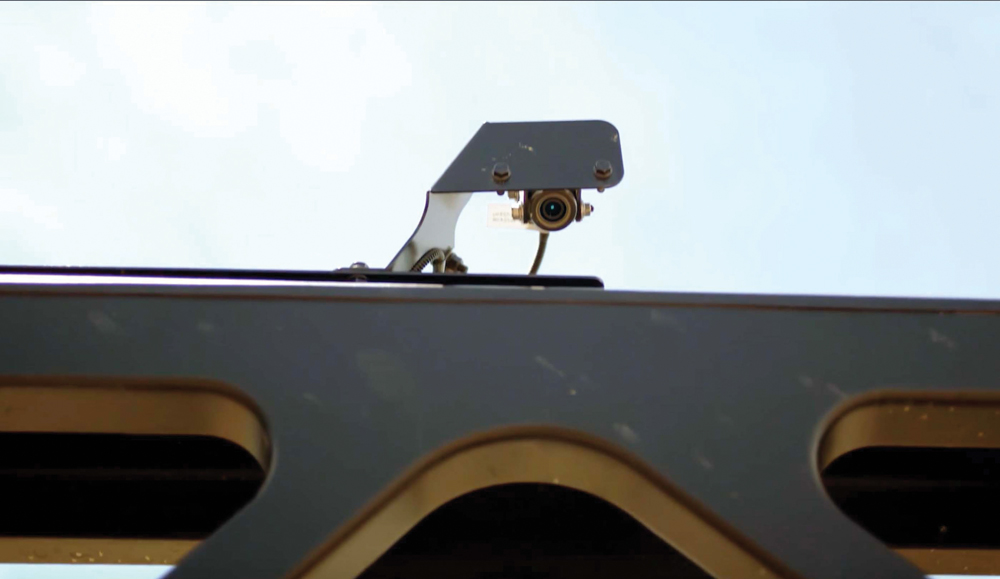
“If (farmers) want to use the data, it’s there. We’re giving them all of the tools to dive into every acre more than they ever have before. We’re not trying to flood them with data. We’re trying to find value where they would find value and provide that. With a weed pressure map, they can start to correlate that to some of the other operations they’re doing and see how that affects the output of the crop.
“Now we’re to the next level, plant-by-plant control. That’s where it gets really interesting and a lot of fun. That’s what See and Spray is able to do.”
See and Spray Ultimate is available on models 410R, 412R, 612R and 616R for 120-foot boom width sprayers. If you’re looking to retrofit a sprayer you already own, you can put See and Spray Premium on those models as well.
“(It’s) just the beginning of the See and Spray journey, says Deinert. “If you can imagine a machine going through the field with cameras and developing more capability and more technology in the future as far as sensing and acting based on what it sees.
“We used to be at the point where we were finding value for people going bigger, faster, wider and more comfortable. Now we’re at the point where there’s a lot of value by being smarter with plant-by-plant control.”
For a video look at the features offered by See and Spray technology, check out AgDealer.com/AgDealerTV.
Specs for models equipped with the See and Spray Ultimate on a 120-foot boom
While Deere offers several models of sprayers, including those built under the Hagie brand name, here are the specs for those models that can be equipped with the See and Spray Ultimate on a 120-foot boom.
410R
Engine: 9.0-litre, six cylinder
Rated engine horsepower: 310
Tank capacity: 1,000 gallons (3,785 litres)
Rinse tank capacity: 120 gallons (454 litres) 120-foot boom (required for See and Spray feature) is available in carbon fibre or steel
Maximum field speed: 25 m.p.h. (40 km/h)
Transport speed: 35 m.p.h. (56 km/h)
412R
Engine: 9.0-litre, six cylinder
Rated engine horsepower: 326
Tank capacity: 1,200 gallons (4,542 litres)
Rinse tank capacity: 170 gallons (646 litres) 120-foot boom (required for See and Spray feature) is available in carbon fibre or steel
Maximum field speed: 25 m.p.h. (40 km/h)
Transport speed: 35 m.p.h. (56 km/h)
612R
Engine: 9.0-litre, six cylinder
Rated engine horsepower: 355
Tank capacity: 1,200 gallons (4,542 litres)
Rinse tank capacity: 170 gallons (646 litres)
120-foot boom (required for See and Spray feature) is available in carbon fibre or steel
Maximum field speed: 25 m.p.h. (40 km/h)
Transport speed: 35 m.p.h. (56 km/h)
616R
Engine: 9.0-litre, six cylinder
Rated engine horsepower: 375
Rinse tank capacity: 160 gallon (606 litres)
120-foot boom (required for See and Spray feature) is available in carbon fibre or steel
Maximum field speed: 25 m.p.h. (40 km/h)
Transport speed: 35 m.p.h. (56 km/h)




